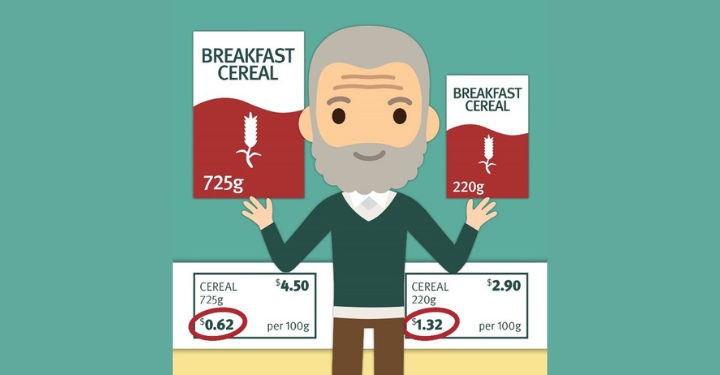
The Coronavirus (COVID-19) pandemic has caused financial hardship for many Australians. One way to help you budget and save while grocery shopping, is using unit pricing.
Unit pricing at grocery stores shows consumers not just the cost of a product, but what the value of that product is as a cost per standard unit of measurement on shelf labels for groceries. Unit pricing makes it easy to check, compare and save when buying groceries.
Large grocery stores and some online grocery retailers must display the unit price when selling packaged food and other grocery products, such as bread, eggs, fruit and vegetables and toilet paper.
Use unit pricing to get better value for money by comparing:
- different brands
- different package sizes and package types
- special and normal prices
- packaged and loose – for example spinach
- fresh, frozen, dried or canned – for example peas
- similar and substitute products – for example rice types
- different convenience levels – for example cheese in blocks/wedges/slices/sticks, or grated or diced
- different grocery retailers, including online stores.
- unit prices in different parts of the supermarket. The same product may be sold in different sections, for example, cheese, meats, seafood, nuts, fruit, and vegetables.
Packaged groceries will often be sold by weight, and liquids sold by volume. For example, you might check and see a 2-kilogram packet of rice for $4.80, with a unit price of $0.24 per 100 grams. You could compare that with a different brand that has 1-kilogram of rice in a box for $3.00, with a unit price of $0.30 per 100grams. Now you can decide which is better value and would suit your situation better.
For more information on unit pricing and how it can help you save money, visit the Australian Competition and Consumer Commission’s website.


